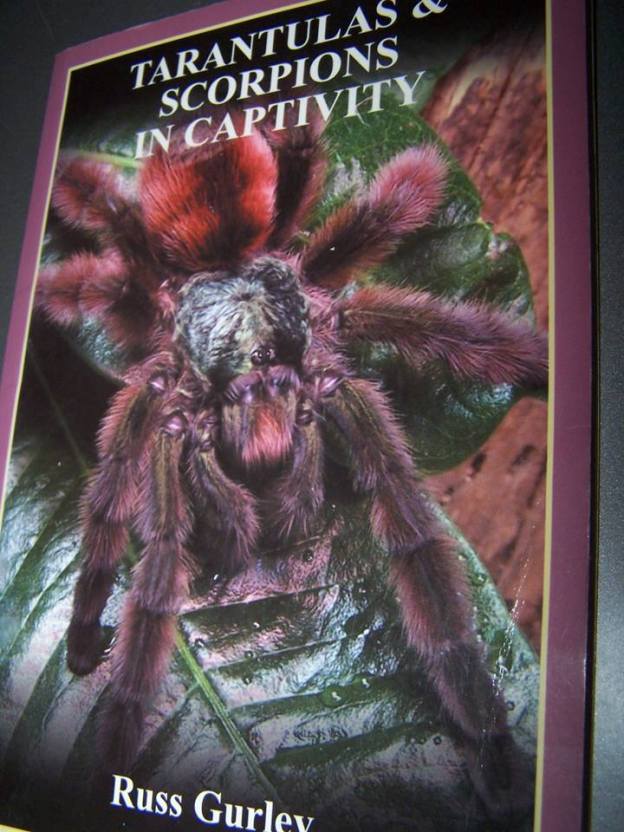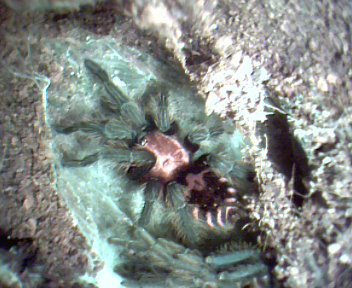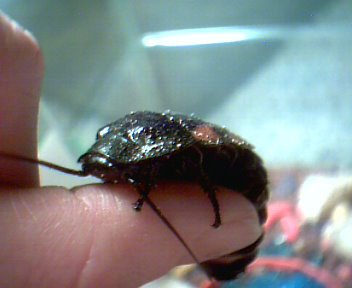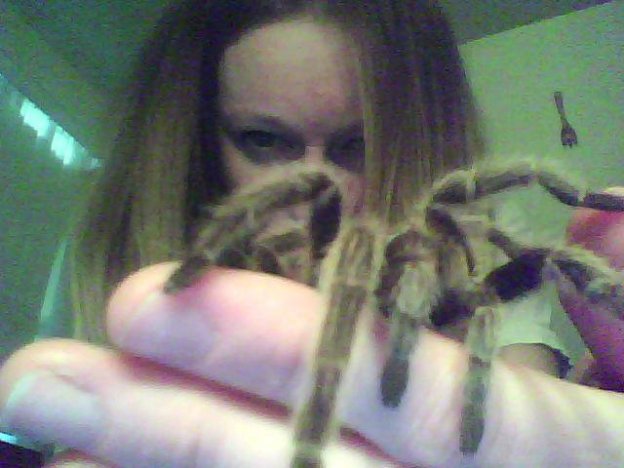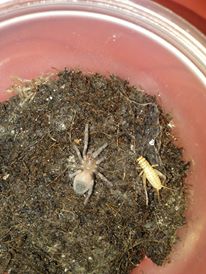
Meet Mitzy, the 1″ Lasidora parahybana that I acquired in February while getting another tarantula sexed.
Mitzy’s species is the 3rd largest in the world, giving her the reputation of being a “dinner plate” tarantula. In an ironic twist, some species are used for food. (Although I have been told that the taste is comparable to that of a soft shelled crab. I think I’ll pass on both, thank you!)
The L. parahybana is an aggressive eater, eating pretty much anything you can throw at it. Mice and lizards are a wild staple, although my preference is to only feed insects- mostly crickets and roaches. (For tiny spiderlings of other species, I do occasionally buy flightless fruit flies.) Which ever becomes your preference is fine, but remember that the LP is a new world species, so if they feel threatened they will not hesitate to flick hairs. Take caution to keep these hairs from entering your airways and eyes. If you do wind up with one of the urticating hairs in your skin, be prepared for an itchy rash. And yes, I do mean ITCHY. Also, as if I have to tell you, BE VERY CAREFUL of the fangs of this species! They can be up to 1″ long, and inflict an extremely painful bite. ALWAYS USE CAUTION WHEN FEEDING!!!
Mitzy may look harmless now, but someday she (I hope for a she, at least) will be extremely large and bulky, and will grow quickly into a nice roomie 20 gallon tank. If you acquire one as an adult, be sure to have an appropriate house. This means no large sided tanks because if your critter falls, it can be fatal. Also, a shallow water dish, and moderate humidity should be provided. Keep a spray bottle on hand to fill the dish from above your tank lid (if the LP’s size is too intimidating for you to put your hands in the tank) and to keep the humidity up. As your LP molts, (flips over and plays dead while shedding it’s exoskeleton) it will need extra humidity and a quiet dark environment. Cover the tank, and do not handle your LP for at least a week to be safe. This goes for all T’s, and although some people say to only wait 3 days, I prefer safe than sorry methods. Do not feed your critter at all during this period as crickets like to feed on, and possibly kill, molting tarantulas. (Even after they molt, tarantulas are very soft and easily killed by an aggressive keeper or hungry food source.)
Provide a hiding spot (hollow logs for BIG LP’s and film containers, or halved flower pots for smaller ones.)
Mitzy is now a 1″ spiderling, but was only 1/8″ when acquired. These suckers grow FAST so be prepared by reading a lot of books, blogs, and articles. Also, never be afraid to ask questions to other hobbyists. I do and always will, as there is so much to learn. Facebook, arachnoboards and the American Tarantula Society are great places to start. Many keepers also recommend a book called The Tarantula Keeper’s Guide as THE BEST BOOK on tarantula keeping.
I hope to have shared some information that may help you in your own endeavors as a tarantula keeper. The Lasidora parahybana is an excellent addition to any household as it is low maintenance, displays well, and makes for great learning for older children and adults alike. No walking, peeing on the carpet, or tearing up of your furniture.
Find me on Facebook. and use my resources to jump start your hobby today 🙂 OR, just search for your own. They are out there, and in the hundreds of thousands across the world.
I have been keeping T’s for 4 years, and probably will for many to come. I love the hobby, the tarantulas, and seeing children and adults take one home for the first time.
Good luck, and thanks for reading!
42.439007
-123.328393
